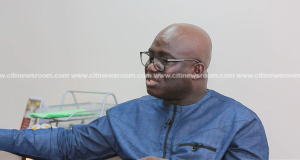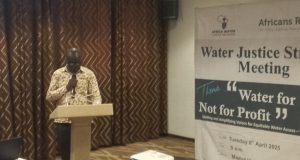Resistance is the only road to liberation for people exploited and suppressed by those who have state power and control over wealth and resources. However, resistance does not mean disregard for the law. Nor does it mean resorting to violence. The means must be just and peaceful. The desired end might take a long time – a long, long time – but its effects are also long lasting.
Laboratories of street resistance
These three cases are laboratories of peoples’ resistance against the power wielded by the Central authorities. In the cases of Kenya and Venezuela the Centre is backed by the Anglo-American Empire; in Catalonia the Centre is backed by the European Union. The people resisting the Centre and the imperial hegemony have moral and solidarity support that cuts across oceans. The three cases are emblematic representations of our times. They will help us understand where we come from and where we are going.
Kenya’s story goes back to the Mau Mau uprising from 1952 to 1960. The current large scale resistance against the newly re-elected government of Uhuru Kenyatta is, in many ways, a continuation of the same struggle – two generations down the road from the days of the Mau Mau. Catalonia and Venezuela, if you want to go back to history, are products of the Spanish Empire that reached its peak in the 16th-17th centuries, 400 hundred years ago. Spain’s colonisation of mainland Venezuela started in 1522, and the resistance against Spain began in 1811 under the leadership of Simon Bolivar. Venezuela became independent from Spain in 1821, but by the beginning of the 19th Century, with the discovery of oil, it became neo-colonised first by Britain and then the United States. Catalonia was, of course, part of the Spanish Empire, now wanting to secede from Spain for a separate nationhood. History lays its indelible marks on the present in mysterious ways – Venezuela and Catalonia are accidental allies in our times.
Kenya- a neo-colonial state
In 2009 the Mau Mau veterans pressed claims for compensation for violation of their human rights by the colonial government. The British government argued that the claim could not be pursued because the statute of limitations had expired. But the court ruled against the government. In June 2013, the former colonial power agreed to compensate more than 5,000 Kenyans tortured and abused during the Mau Mau insurgency.[1] On 12 September 2015, it went further and unveiled a Mau Mau memorial statue in Nairobi’s Uhuru Park that it funded “as a symbol of reconciliation between the British government, the Mau Mau, and all those who suffered”.
The neocolonial state is a contested site between the empire and nationalist forces. Here are its principal features:
- A neocolonial condition does not negate the rule of the international financial oligarchy. The petty bourgeoisie arising out of the colonial period is blocked from becoming a fully fledged national bourgeoisie, their interests locked up with monopoly finance capital.
- A neocolonial state and economy are sustained by corruption, which comes in two forms: institutional and personal. The state (like Kenya) is institutionally corrupt; in return for the so-called “development aid”, it is obliged to pursue the donor-imposed policies of free trade liberalisation. This is reinforced by the institutions of global governance – the IMF, the World Bank and the World Trade Organisation (WTO). The second form of corruption is personal; these are bribes mainly to state officials. In 2005, for example, an anti-graft Kenyan official (John Githongo) claimed that corruption under the President Kibaki had cost the country $1 billion. Following his revelations, he had to flee from Kenya to save his life.[3]
- Nonetheless, political independence is a significant step towards liberation from the empire. It makes it more cumbersome for the empire to control the neocolonies compared to colonial rule. Instead of ruling directly, the empire has to work through local agents, called “compradors”.[4] Also, the neocolonial condition deepens the contradiction between imperialism and the people. The struggle for national self-determination reaches a heighted level.
Contradictions of the electoral process
In March 2013, Uhuru Kenyatta – the son of Kenya’s first president- won the presidential election with just over 50% of the vote. His main rival, Prime Minister Raila Odinga, petitioned the Supreme Court (comprising of six judges, headed by the Chief Justice) to nullify the elections on grounds of massive vote-rigging. However, the Court dismissed the petitions for “lack of evidence”.
On 8 August, 2017, Uhuru Kenyatta (leading the Jubilee coalition) and Raila Odinga (leading the National Super Alliance – NASA) again contested the presidential elections. Once again, Uhuru won. Odinga again petitioned the Supreme Court to nullify the elections. This time the Court, in its judgment of 1 September, nullified the elections on the grounds that the Electoral and Boundaries Commission (IEBC) had failed to meet constitutional and legal requirements of the poll. The Chief Justice said “the anomalies were of substantial nature and any court would have no option but to overturn the results”. It ordered the IEBC to conduct a fresh poll within 60 days as provided for in the Constitution.
Imperial interests masquerading behind “free and fair” elections
What line did the United States and Britain take on the 2017 flawed elections? Having given its seal of legitimacy to the earlier 8 August poll through its elections observers who declared that the election was “free, fair and credible”, the imperial states issued a statement following NASA’s rejection of elections that “both sides” should stop interfering with the electoral system.With much at stake in Kenya, ably managed by the Uhuru administration, this was not surprising. In her article, “Who’s Cheating Kenyan Voters?” Helen Epstein argues that their geopolitical interests demands that Kenyatta stays in power.
“Why isn’t the US doing more to pressure Kenyatta to address these Odinga’s concerns? Geopolitics could be one reason. Kenyatta’s militaristic approach to the crises in the neighbouring countries of Somalia and South Sudan aligns closely with Western security policy. Odinga, however, is more inclined toward a negotiated resolution of these conflicts. If it favors Kenyatta’s strategy, the US may not be as neutral in Kenya’s electoral contest as it claims to be.”
On the other side, also predictably, NASA declared the election a “meaningless exercise, a charade”. In response to it, it announced that NASA would launch a “resistance movement”.[10] It created two organs: a Peoples’ Assembly (PA) and the National Resistance Movement (NRM). It launched the PA – “until a legitimate presidency is restored” – comprising of workers, civil society organisations (CSOs), religious leaders, women, youth and economic interest groups. As part of the People’s Assembly, NASA created a Task Force to look into the systemic governance weaknesses that have precipitated the political crisis,
The Task Force would recommend constitutional amendments that would be presented to the People’s Assembly for adoption, and thereafter to the County Assemblies for ratification.
As for the Resistance Action Programme, it would include economic boycotts, peaceful processions picketing, and other legitimate protests. “If there is no justice for the people, let there be no peace for the government”, NASA declared at the launch of the resistance, but it insisted that the resistance has to be peaceful, not violent. The boycott of milk products belonging to the Kenyatta family companies has forced them to change packaging hoping to dupe the people. Safaricom – a mobile telephone and internet company – also linked with the “royal” family, has lost thousands of subscribers. The CEO pleaded with NASA, in vain, to suspend the boycott. NASA has a growing list of companies whose products should be boycotted for allegedly supporting the Jubilee regime at the poll.
It is important to understand the difference between these political-legal concepts. The legal system that provides rules of governance is embodied in the nation’s constitution. However, for the law to be legitimate, it must comply with certain moral values of the people. In other words, the obligation to obey the law does not follow automatically. The government has “authority” to rule, yes, but that authority is not absolute. The government expects obedience, but that obedience is conditional on the government conforming to the values and norms of the bigger society. If the government repudiates these norms, then it should not be surprised if the people put up resistance against state authority.
- Human progress is based on peoples’ resistance against illegitimate state power
The Mau Mau, Maduro, and Puigdemont are sterling examples of resistance against centralised, undemocratic, uncaring, illegitimate state power. There are other such peoples’ movements –environmental, women’s liberation, Black Lives Matter, war resistance, and scores of others. Especially significant are everyday forms of community resistance.
Resistance is the only road to liberation for people exploited and suppressed by those who have state power and control over wealth and resources.
However, resistance does not mean disregard for the law or the constitution. Nor does it mean resort to violence.
- Non-violent resistance to illegitimate authority
The state authority can – and in my view should – be challenged by nonviolent active resistance. Gandhi and Martin Luther King, for example, were law-abiding activists, and set a sterling model for civil disobedience of an illegitimate authority. Violence by the ruler does not justify a counter violent response. Ends, I strongly hold, do not justify the means. The means must be just and peaceful; the desired end might take a long time – a long, long time – but their effects are also long lasting. This is not the same thing as “offering the other cheek” when you are assaulted; you must defend yourself, of course, but – and here we are talking about a political conflict – mass mobilisation for a nonviolent resistance against oppression and exploitation is a more effective and just way of struggle.
By:Yash Tandon,
 Public Agenda NewsPaper Ghana's only Advocacy & Development Newspaper
Public Agenda NewsPaper Ghana's only Advocacy & Development Newspaper





